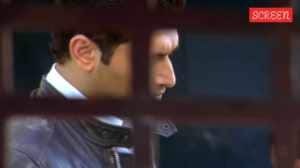The Fairest
Shamsur Rahman Faruqis epic work annexes new territory for the Urdu novel
Book: The Mirror of Beauty
Author: Shamsur Rahman Faruqi
Publisher: Hamish Hamilton
Price: Rs 899
Pages: 984
Shamsur Rahman Faruqi begins The Mirror of Beauty with two quaint characters,one a genealogist and the other a lover of old books and manuscripts,who provide an entry into the enchanting world of this novel. It is clear that this is a novel for the informed,the initiated,the cognoscenti. Faruqis comments make it clear that,above all,he wrote it for himself,distilling the quests and preferences of a long literary life. What you take away from the book will depend on how much you bring to it.
The publication of Kai Chand thé Sar-e Aasman (2006) was an event in Urdu/Hindi literary circles. Faruqi has a formidable reputation,having worn many hats in his career as a trend-setting critic,scholar,editor and translator. Many who couldnt read Urdu or Hindi eagerly awaited the English version. Now that it is here,I wouldnt be surprised if it sells more than the Urdu or Hindi versions. Great contemporary fiction writers of the world Kundera,Marquez,Eco,Pamuk sell much more in translation than in the original language.
The narrator goes right to the heart of the book when he says about Wasim Jafar,a descendant of Wazir Khanum,the protagonist of the book: he rejected the notion that the past is a foreign country and strangers who visit there cannot comprehend its language The past is not a foreign country for Faruqi,steeped as he is in the literary culture of the 18th and 19th centuries,a culture that represented the best of Indo-Muslim heritage,a period in which a galaxy of Persian and Urdu (Hindi in Faruqis characterisation) poets appeared on the scene,each more accomplished than the other. Faruqis endeavour in the novel is to recreate that age and its mores as exemplified in its poetry,music and painting,through the persona of Wazir Khanum,a woman of near-perfect beauty and accomplishments,grit and grace. In the 1000-odd pages,divided into seven books,68 chapters and two interludes,Faruqi deals with the antecedents and vicissitudes of Wazir Khanums life,the declining years of the Mughal empire,the tenuous relationship between the would-be rulers and the Haveli (the Red Fort) and the colourful officials of the Company Bahadur,all historical figures,who combined a certain admiration for Delhis culture with utmost ruthlessness to any kind of opposition to their authority.
With Mirror of Beauty,Faruqi has ensured his place alongside the two most celebrated novelists in Urdu,Qurratulain Hyder and Abdullah Hussain. While he cannot match their corpus or their virtuosity in some areas of the novelistic art,Mirror of Beauty,in its capaciousness and plenitude,will be compared with the best of those works. Faruqi,of course,is an admirer of both,more of Hyder,I suspect,to whose novel Kare Jahan Daraaz Hai he alludes to in the early pages of Mirror of Beauty.
I would also single out for praise Faruqis aplomb in drawing a woman of great sexual charm and vitality. Something incomparably beautiful happens when she and Nawab Shamsuddin Ahmad Khan are in the act of love-making,something that defines the essence of the man-woman relationship. I havent come across anything comparable to these love scenes in modern Urdu fiction and in this sense,and other senses too,Faruqi can be said to have annexed new territory for the genre and expanded its possibilities. Readers in English might wonder at the presence of so much poetry in a work of fiction. But it is a fact that the irresistible charm of Urdu poetry draws many writers. One is reminded of Vikram Seths charming evocation of the Urdu poetic world in A Suitable Boy and the contemporary Bengali novel Dozakhnama by Rabisankar Bal. I could name several others.
Faruqi also shares with Hyder and Hussain the distinction of being a self-translator. All of them have translated their masterpieces into English themselves,with varying results. While Hyder and Hussain left out material from the Urdu originals of River of Fire and Weary Generations,respectively,to make the narrative tighter,to conform to the Western notion of a compact plot,Faruqi adds considerable explanatory materials to make it accessible to readers in English,producing an expansion of textuality rather than attenuation. For instance,the book opens with family trees,a cast of characters and a prelude,reminiscent of 18th century European novels. Structurally,unlike the Urdu version,he divides the novel into separate books and reworks chapters; cryptic one-word or two-word chapter headings in Urdu have been changed into long,explanatory ones in English,interludes are introduced for smooth transition from one book to another,and so on. Faruqi displays equal felicity in Urdu and English. He doesnt always submit to the dictates of the English idiom but moulds it to convey the cultural richness of the Indo-Muslim experience,keeping intact the timbre and twang of the original,but making his English as mellifluous as his Urdu. Alien metaphors and symbols are woven into the texture of an archaic English with finesse. However,I wish he had kept some of the original expressions like Subhanallah! rather than translating it as Only God is untouched by blemish! But it is his decision,and as a translation theorist,he knows the implication of such choices.
It does not really matter if there are one or two minor blemishes in a work of such proportions. One such occurs on page 938 where the narrator says that Fathul Mulk,Wazirs last husband,was buried on 10 July,2012 (instead of 1856). Obviously the handiwork of an overzealous computer,it escaped the otherwise discerning eye of the editor.
M Asaduddin teaches literature at Jamia Millia Islamia University and has won the Sahitya Akademi Translation Prize







- 01
- 02
- 03
- 04
- 05
























